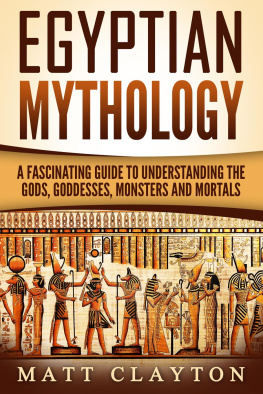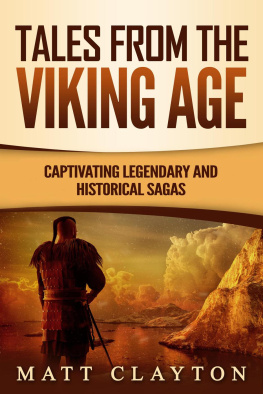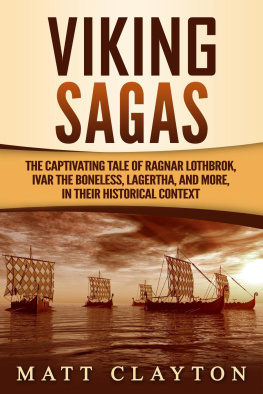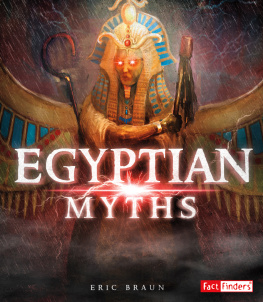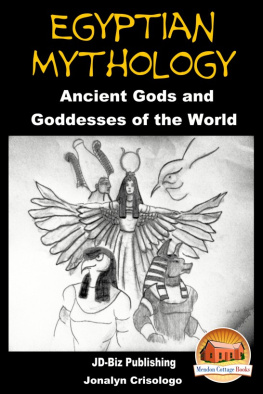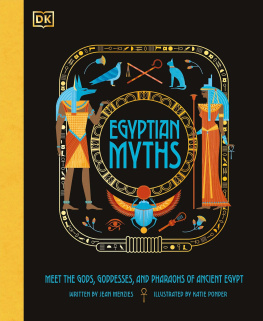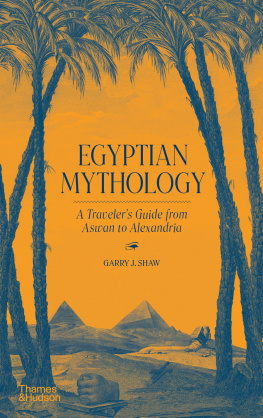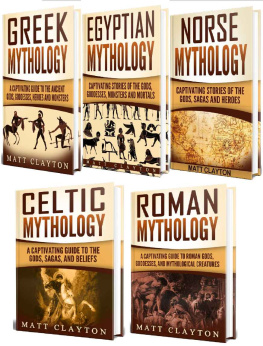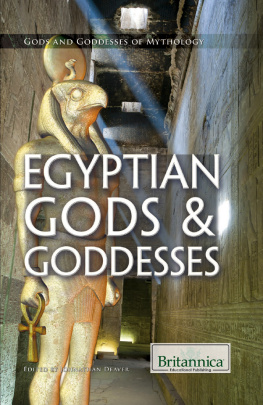Egyptian Mythology
A Fascinating Guide to Understanding the Gods, Goddesses, Monsters, and Mortals
Copyright 2017
All rights reserved. No part of this book may be reproduced in any form without permission in writing from the author. Reviewers may quote brief passages in reviews.
Disclaimer No part of this publication may be reproduced or transmitted in any form or by any means, mechanical or electronic, including photocopying or recording, or by any information storage and retrieval system, or transmitted by email without permission in writing from the publisher.
While all attempts have been made to verify the information provided in this publication, neither the author nor the publisher assumes any responsibility for errors, omissions, or contrary interpretations of the subject matter herein.
This book is for entertainment purposes only. The views expressed are those of the author alone, and should not be taken as expert instruction or commands. The reader is responsible for his or her own actions.
Adherence to all applicable laws and regulations, including international, federal, state, and local laws governing professional licensing, business practices, advertising, and all other aspects of doing business in the US, Canada, UK, or any other jurisdiction is the sole responsibility of the purchaser or reader.
Neither the author nor the publisher assumes any responsibility or liability whatsoever on the behalf of the purchaser or reader of these materials. Any perceived slight of any individual or organization is purely unintentional.
Table of Contents
Introduction
F rom what we know of history, Egypt, along with Sumer, were the foundations of civilization. The Fertile Crescent, which stretched from the Nile Valley to the twin rivers in Mesopotamia, gave us our earliest glimpse of organized man. But organized how? For one, both locations gave us writinghieroglyphics in Egypt and cuneiform in Sumer. There is still some debate about who was first.
In this book, we will start by looking at the gods and goddesses of KemetAncient Egypt. Then, we will turn our attention to the monsters which likely gave them nightmares and humbled them in their quest to bring order to the world around them. Finally, we will look at the mortals which shaped their civilization and made Egypt the bedrock of our own history. Though Egypt today is only a third-world nation, struggling with terrorism and poverty, their heritage remains vital to the understanding of who we are as a species.
Part 1 The Gods Come to Egypt
T he Book of Knowing The Evolutions Of Ra, and of Overthrowing Apep.
[These are] the; words which the god Neb-er-tcher spake after he had, come into being:
I am he who came into being in the form of the god Khepera, and I am the creator of that which came into being, that is to say, I am the creator of everything which came into being: now the things which I created, and which came forth out of my mouth after that I had come into being myself were exceedingly many. The sky (or heaven) had not come into being, the earth did not exist, and the children of the earth, and the creeping, things, had not been made at that time. I myself raised them up from out of Nu, from a state of helpless inertness. I found no place whereon I could stand. I worked a charm upon my own heart (or, will), I laid the foundation [of things] by Maat, and I made everything which had form. I was [then] one by myself, for I had not emitted from myself the god Shu, and I had not spit out from myself the goddess Tefnut; and there existed no other who could work with me.
Legends of the Gods (1912)
E. A. Wallis Budge
Egyptologist and Philologist for the British Museum
Chapter 1 Osiris, Isis, Seth, and Horus
P erhaps the most important myth of Ancient Egypt is that of Osiris. In it, his wife Isis and his son Horus battled against his brother Seth.
The spellings with which we are most familiar are modern versions of the Greek. The original Egyptian names were more like the following:
OsirisAuser
IsisAsett
SethSett
HorusHeru
The double t at the end of Asett and Sett is not traditional, but it helps to distinguish the name Sett from the common English word set.
Throughout all of Egyptian myth, there is very little actually said about Osiris (Auser) himself. Most of what is said comes after his betrayal by Seth (Sett).
Imagining the Osiris Myth
As they had done for all the ages of man, the priests of the great city of Iunu had crossed over the Neweya during the twilight hour after dawn and before sunrise. But this morning vigil at the temple plateau was more somber than usual. All of Kemet was in mourning for their dead ruler, Auser.
The death of a god was not to be taken lightly. Such things tended to throw the entire universe out of balance. Sett had gone over to the dark side of reality. No longer did he stand on the prow of the sun barge, fighting off Apepthe great snake of chaos. Instead, Sett had become chaos. He had betrayed his brother, Auser, and had murdered him. If the priests could believe the rumors, Sett had hacked up Ausers body and flung the parts all up and down the great Neweya and its life-giving waters.
As the eastern horizon brightened, the priests performed their daily ritual, burning a handful of grain in sacrifice to the great god, Ragiver of light. His return to the skies above the mortal realm would be to look upon a world greatly saddened by what had happened to the children of Geb (Earth) and Nut (Heavens). Their offspring, Auser, had been murdered by his brother, Sett. And their offspring, Asett, had been made a widow by the same action.
When the priests had returned to Iunu, they heard the news that Sett had taken control of all Kemet. Asett, Ausers lovely wife, had fled into the hills to the West. Or so people were being told.
Ahmose of Zau made his way into the temple and toward the large meeting hall. Outside the hall, he saw a familiar face. At first, he could not put a name to that visage. Something about it all didnt make sense. What was a beggar doing in the temple at this hour? And why would he recognize a beggar? Then, the truth struck him. That was no beggar, despite the shabby clothes she wore. That was Asett, herself! The goddess was in disguise.
Your eminence! said Ahmose, loud enough only to be heard by her. What are you doing here? Its not safe!
She turned and bade him to come closer.
I need your help, she said. Sett has robbed us all, but especially me. Auser and I wanted to have a son. If we act quickly, it is still not too late. I need for the priesthood to gather all the pieces of Auser. They are to bring them together so that I may perform sacred rites and to consummate the union which was denied us. Our son will become the rightful ruler of Kemet.
Ahmose looked confused, but nodded slowly.
Why do you hesitate? she asked.
I dont doubt your powers, eminence. Its just that Sett is undoubtedly looking for you and I fear for your safety.
What do you suggest?
I am from Zau, here in the Delta. I know of several places where we could bring together the pieces of your husband and find the peace and security required for your ceremony.
Good. And thank you ...
Ahmose, your eminence. My name is Ahmose. Ill see to it right away. He turned to leave.
One more thing, said Asett. We also need to have Ausers royal accessories. Do you know of someone who can steal them away from Sett and his forces?
Ahmose thought for a moment and nodded. Yes, your eminence. I know of some officers who are still loyal to you and to Auser.
Thank you, Ahmose.
My lady. The priest hesitated. Has Sett become corrupted by Apep?

